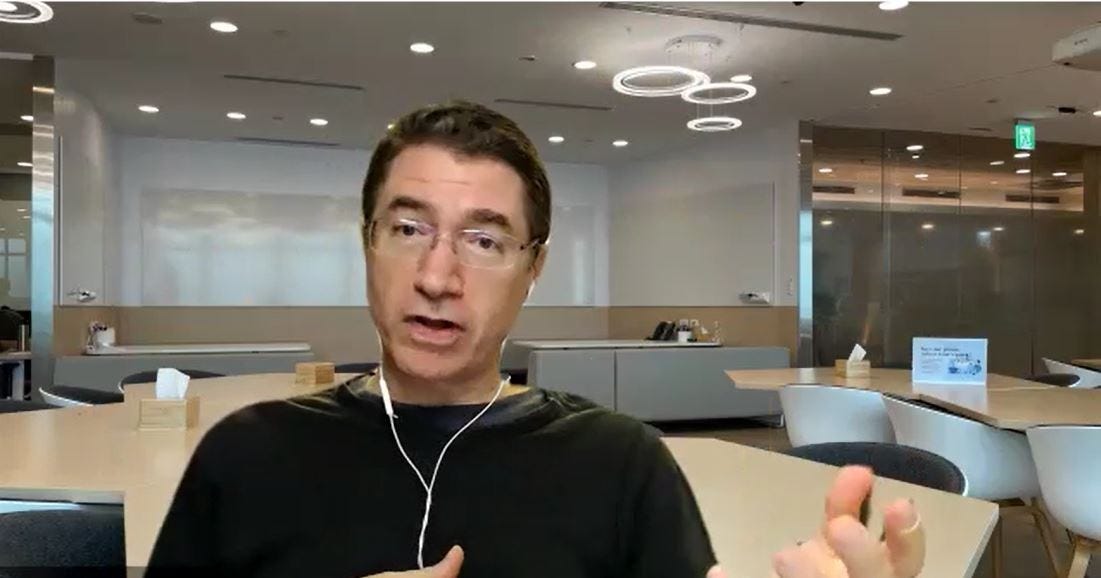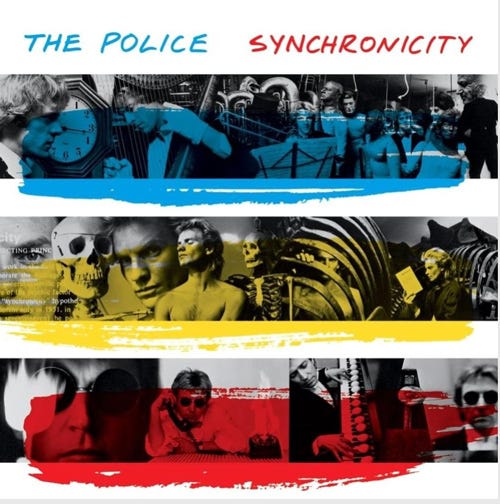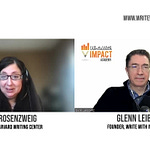During my first few weekly hour-long sessions with Bailly, my book coach, we spent a lot of time discussing the structure of my book, which will be about writing with impact, a core theme that has run through my writing and podcasting for the past seven-plus years.
After the first or second session, it occurred to me that I could use an acronym as a mnemonic device to help the reader more easily recall and apply the six-step methodology for writing that I developed to structure my book.
This turned out to be a pivotal decision. After some back-and-forth and swapping letters around and crafting more relevant words to represent each of the letters in my six-point methodology, I landed on the perfect acronym that just fits — and I have not changed it since (more on this in future posts).
I’ve also spent a great deal of time shuffling (and reshuffling) the pieces of each of the two initial chapters that I’m drafting, in an effort to craft a clear and easy-to-follow structure. Easy-to-follow for me, as I’m the one writing the book. I am one of the the primary beneficiaries of the clarity and direction that a logical structure provides.

Easy-to-follow for the reader, as I want them to feel that whatever they are reading at any point in the book is linked to the whole. That if they need to dip into a particular section to refresh themselves on a concept or strategy, they can make sense of it by referring to the chapters before it — and the chapters after.
Structure has, in other words, been instrumental. It has given me the GPS coordinates that I need to navigate my way to a finished book. I’ve set a deadline of getting this book published and in the hands of my readers by February 2022. That’s a tight deadline, and there still is lots of work to be done before then to get it ready to share with the world. Structure is key, and I realize now just how much time it can (and should) consume in the book-writing process.
Then this happened…
On the morning after my first session with Bailly, I was dropping my daughter off at the bus stop. Turning my head to the right and upward, what I saw stunned me: A building-length advertisement for a new apartment building. Three letters, in a font size that probably matched the height of one of the floors of the building the ad was hanging from: SRC.
SRC, I hypothesized from the context, probably meant “steel reinforced concrete,” an important selling point in Taipei, Taiwan, a place where earthquakes regularly rattle our dense urban jungle, leaving hairline cracks on our walls and ceilings that, if not patched up or painted over, serve as constant reminders of our immense vulnerability to the awesome forces of nature.
What shocked me was that SRC was just too similar to SCR, the three letters of the storytelling framework I had just been fiddling with in my outline that morning, and discussing with Bailly the night before. What I also found stunning was the fact that these were the only three Roman alphabetic letters in an advertising layout that otherwise featured only Chinese characters.
Here’s a photo I took to prove I’m not making this up:

I suddenly felt that I was being watched. Watched from above and beyond, watched by that mysterious, ineffable force some folks call God, others prefer to call a “spiritual force.” That force, whatever you choose to call it, was playing a prank on me, and sending me a not-so-subtle hint about my choice of SCR as a storytelling framework for my book (I took the hint as affirmation I was in the right direction, but I’ll never really know what was meant by it).
While I have since renamed SCR to GOS — Goal, Obstacle, Solution — the essence of the framework is very much the same. It was born from the SCR framework I learned decades ago, and is rooted in ancient storytelling techniques that writers still use today. It’s about how you can structure your story as a problem-solving challenge. Storytelling, defined in this way, is an approach to articulating how people conquer the challenges and solve the problems in their lives. It’s the way we humans pass on our knowledge to others in our community, to other communities, to posterity. So they can learn from us, and, it is hoped, so they will have the tools they need at hand when they encounter the same challenge themselves. To help them succeed the first time around, or to help them avoid screwing up like we did, to put it another way.
I was dumbstruck by the synchronicity of it. Because SRC is so close to the acronym for the storytelling structure that was on my mind. I had spotted these letters almost immediately after I was writing about it that morning, after having discussed its applicability the night before, as I hashed out the structure of my table of contents for my book with Bailly.
There’s a special resonance and relevance to the word “synchronicity” that is linked to where I live, and the language I hear and use daily. In Mandarin Chinese, the two characters that hold the meaning that most resembles synchronicity are 緣分 pronounced “yuan-fen.” It’s one of my favorite words in Chinese, because it so perfectly encapsulates the many instances throughout my life where I’ve met people I had never known before who connected with me, and resonated with me, on a deeper level.
It encapsulates experiences I’ve had that, while seemingly trivial and potentially inconsequential at the time — like a simple “thank you” email, or the courage I mustered to ask for something I wanted, but was wholly unsure of ever getting — have had a pivotal impact on my life.
The word itself makes me think of the name of the album released in 1983 by the Police — “Synchronicity” — their bestselling album — and also their last.
That synchronistic moment I had when I spotted the three letters “SRC” plastered in giant font that morning at my daughter’s bus stop reminds me of that classic song, sung by Sting, that became their most enduring single from the album, the lyrics and music of which that you can’t unhear in your head: “Every breath you take”:
Every breath you take, Every move you make, Every bond you break, Every step you take, I’ll be watching you
The sense of my every move being watched — like the lyrics in this song — is precisely how I felt the moment I saw those three letters in the ad.
The name they chose for the album is almost certainly an outcome of Sting’s years of Jungian psychoanalysis. I recall first learning about the deep influence these sessions had had on him in an an interview I read in 1990, while standing at the magazine rack of the book store at Yale, where I was a graduate student at the time (I was on a very tight budget at the time, and couldn’t afford to buy glossy magazines. This was a good five years before the advent of the Internet and the cornucopia of freely available content.)
Digging into the concept of synchronicity, I found this Wikipedia entry:
Synchronicity is a concept first introduced by analytical psychologist Carl G. Jung “to describe circumstances that appear meaningfully related yet lack a causal connection.”
Jung held that to ascribe meaning to certain acausal coincidences can be a healthy, even necessary, function of the human mind — principally, by way of bringing important material of the unconscious mind to attention.
Jung’s view was that, just as causal connections can provide a meaningful understanding of the psyche and reality, so too may acausal connections. Events connected by meaning need not have an explanation in terms of causality…
In my experience, synchronicity describes those rare moments of coincidence, those moments in my life where a person, an image, a word, a sound, a smell, intersects with my life unexpectedly, randomly, without reason or logic. These moments, these experiences, connect with me in some small way, resonate with me, even if I can’t explain how or why they occurred.
So, how is this related to my book writing process?
My first month of working on my book, and this moment of synchronicity that I experienced early on in the process, has underscored to me that structure, as essential as it is, will not be enough to complete it. Structure will need to be complemented by synchronicity, those fleeting and seemingly illogical, acausal insights and “A-ha” moments I sometimes get during the structuring and writing process.
It is these moments when some of the ideas for my book will surface, ideas that will put the meat on the bones of the structure I’ve laid down for it.
It is these moments of insight that will help move this massive project along, in the face of so many external pressures—my day job, family obligations, the need to eat, sleep, pay bills— ultimately pushing it to completion before my self-imposed deadline.
My six-step methodology gives me the structure I need to organize and write my book. But as I’ve learned, some of the best insights occur when I'm not even paying attention.
Curious: Have you ever had a moment of "synchronicity"? Tell me about it in the comments.
Please buy me a cup of coffee! All this writing and podcasting takes an enormous amount of time, effort— and coffee. I buy bags of freshly ground beans that I brew, cup-by-cup, very manually and low-techy, using my trusty plastic funnel and a paper filter. Please send me whatever you feel like treating me to today: a cup or two, a bag’s worth…via PayPal right here. Much appreciated.















